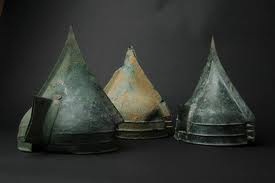
A SHORT HISTORY OUR BEDROOMS CONDITIONS AND RESERVATIONS ACCESS SOME PHOTOS AND VISITS EVENTS AGENDA 20118 FRIENDS & PARTNERS
Ailly derives from the latin AILLIUM, a property surrounded by walls...
Le château d'Ailly is mentioned for the very first in 1050.
Robert d'Ailly built here a manor surrounded with walls, of moats, as well as mill.
This is the same period that the church consecrated to St Gerbold (a 6th century Norman Saint) is built.
.jpg)
Jean de Villiers, alias le Sauvage, Lord d'Ailly, de Grisy and of Vendeuvre would stand out for his valor against the english in the recapture of the cities of Caen and of St Malo .
In1431 english King Henri VI appointed the Cardinal, his uncle, in place of the then governor, when the englis retook Normandy. He then gave him the lands of Ailly, Grisy and Vendeuvre confiscated from Jean de Villiers who has followed the King of France's party.
Back in french possession, the manor for a time belonged to the Courseulles, a normand family, then to the De Saint Laurens family before being acquired by the d'Aubert de Caudémone in the 17th century. Charles d'aubert d'Ailly, a Knight of Malta, transformed it in 1721, giving it its current configuration.
The château was then passed on, as always by marriage, to the powerful family of the des Vauquelin des Chênes, Eustaches, baron de Verneuses, descendant of Nicolas Vauquelin des Yveteaux (born in 1567 at the château of la Fresnaye in Falaise and died march 9,1649 in Paris, libertine french poet, tutor of Caesar de Vendôme, natural son of Henri IV and Gabrielle d'Estrées, in charge of the future Louis XIII.)
Eustache Louis Vauquelin des Chesnes, (a Chevau léger de la Garde then an officier in yhe "armée d'émigration" - Knight de Malte) married Victoire Louise Marguerite d'Albon in 1805 au château of Fontainebleau. Princesse d'Albon daughter of Angélique Charlotte de Castellane who was "Lady in Waiting" for Madame Victoire de France, would have the latter for godmother ( louis XV daughter) and LouisXVIII for godfather.
Eustache Louis de Vauquelin des Chenes, inherited the marquess of Avernes from his second four times removed, Charles Antoine de Bernard d'Avernes who died childless.
In addition to the land of d'Avernes, Eustache would also inherite an invaluable
work from the fifteenth century on a history of Normandy entirely illuminated
wich for a century would a possession of the Vauquelins ans wich now
at British Museum since 1941.
Their eldest son Louis-Charles Vauquelin des Chênes (1807-1877) woukld be"one of richest landowners in the Falaise region" and thanks to his travels to England he recreated a model farm on his land to promote new agricultral practices. I
It was undertaking these large-scale projects in 1832 that he would unearth the 9 famous d'Ailly helmets. Helmets in parfect state dating to the end of Bronze Age.(Similar to a type of helmets once used in central Europe and in Italy in the 8th century B.C. They testify to the great mastery achieved by the craftsmen at the end of the Bronze Age. musée de Normandie Caen)
A helmet is exhibit at 'University Museum de Philadephie (N°inv.70-4-1).
A second is currently preserved at the Palazzo Barbérini,
in the 'Armoria Odescalchi, à Rome (N°inv.1022.1727).
It is envisaged that it transfert to Palazzo Venezia.
A third helmet is still preserved in the Musée départemental des Antiquités de Rouen (N°inv.227.78(A).
The reste is on exhibit in the Musée de Normandie in the Château of Caen.

Leaving no offspring, it is his sister, Henriette-Louise de Vauquelin des Chesnes (1811-1886) who inherited the domain. She would marry, Marie-Gustave de Vigneral.
.jpg)
The domain remained in the family until 2007, date on wich was acquired by the its current owner.